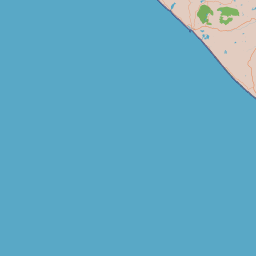| PAS_1 |
The alkaloids found in D. stramonium, are organic esters used clinically as anticholinergic agents. Jimson weed has been reported as a drug of abuse and has been involved in the accidental poisoning of humans and animals. Symptoms of acute jimson weed poisoning included dryness of the mouth and extreme thirst, dryness of the skin, pupil dilation and impaired vision, urinary retention, rapid heartbeat, confusion, restlessness, hallucinations, and loss of consciousness. The anticholinergic syndrome results from the inhibition of central and peripheral muscarinic neurotransmission. [Datura intoxication in Riyadh. Taha SA, Mahdi AH Trans R Soc Trop Med Hyg. 1984; 78(1):134-5.] |
| PAS_2 |
The methanol extracts of D. stromonium and Datura inoxia showed activity against Gram positive bacteria in a dose dependent manner. Little or no antimicrobial activity was found against Escherichia coli and Psuedomonas aeruginosa. The anti-microbial activity of combined crude ethanolic extract of D. stromonium, Terminalia arjuna and Withania somnifera in cup plate diffusion method for antibacterial and antifungal activity. The extracts were subjected to screening to detect potential antimicrobial activity against Staphylococcus aureus, Bacillus subtilus, Escherichia coli, Klebsiella pneumoniae, Micrococcus luteus and Candida albicans with compare Ciprofloxacin standard drug. [Sharma MC, Sharma S. Phytochemical, preliminary pharmacognostical and antimicrobial evaluation of combined crude aqueous extract. Int J Microbiol Res. 2010;1(3):166–170.] https://scholar.google.com/scholar_lookup?journal=Int+J+Microbiol+Res&title=Phytochemical,+preliminary+pharmacognostical+and+antimicrobial+evaluation+of+combined+crude+aqueous+extract&author=MC+Sharma&author=S+Sharma&volume=1&issue=3&publication_year=2010&pages=166-170& |
| Agro Ecological Zone |
Agro Ecological Sub Region (ICAR) Central Highlands (Malwa), Gujarat Plain (5.1) , Agro-Climatic Zone (Planning Commission) Gujarat Plains and hills region (XIII), Agro Climatic Zone (NARP) North Saurashtra, South Saurashtra (GJ-6,GJ-7) |
| Disease Symptoms / Clinical Signs |
Animal passes losses to watery faeces, it may or may not contain Blood or Mucus, depending upon the causative factor, animal become dull and dehydrated as the disease progresses. |
| Disease Description |
Diarrhea is loose, watery stools (bowel movements). Animal is said to be in diarrhea if it have loose stools three or more times in one day |
| Disease Control |
Isolation of animal, Cleaning of premise , Identify the cause and follow the strict treatment protocols, are some basic point to control Diarrhoea |
| Disease Prevention |
Good biosecurity and management practices are the best prevention for bacterial and viral diarrhoea in adult cattle. Ensuring that cattle are in good health reduces their susceptibility to becoming infected while examination and quarantine practices are good ways to make sure you are not introducing unwell cattle into your herd. Colostrum feeding to calves, regular deworming, Good Hygiene in the premise will prevent the incidence of diarrhoea in herd. |
| Precautions |
|
| Procedure of Use |
Use of thorn apple (Datura metel) leaves and pearl millet (Pennisetum typhoides) flour for treating diarrhoea in animal. Farmer Ramabhai Tejabhen from Gujarat informs that all kinds of animals suffer from diarrhoea at one time or the other. The affected animal excrets watery and stinking faeces. It becomes weak and the female animal yields low milk. For treatment, he feeds two leaves of thorn apple (Datura metel) by placing it between a thick chapatti of pearl millet (Pennisetum typhoides) flour for three times at every 4 hour interval. This cures diarrhoea. |
| Etiology Causative Agent |
Possible causes include bacterial and viral infections, certain chemicals, intestinal parasites, poor diet, overfeeding on milk or lush grass, poisonous plants and other toxins, food allergies and even stress. Where diarrhoea is the most obvious sign, the primary causes can be thought of broadly in two different groups, nutritional and infectious.
Nutritional causes include:
• Acidosis (e.g. grain overload)
• Aush green feed
• Cobalt or selenium deficiency
• Copper deficiency or toxicity
Infectious causes include:Worms (Cestode, Trematode, Nematode etc)
• Viruses (e.g. bovine viral diarrhoea virus, Rota virus, Corona, etc.)
• Bacteria (e.g. Salmonella or Yersinia –etc.)
There are many other diseases where diarrhoea presents as a secondary issue. Some of these include:
• liver disease
• peritonitis (e.g. hardware disease)
• heart failure
• chemical or plant poisonings (e.g. lead or nitrate) |
| Global Context |
|
| Lesson Implication |
|
| Other Medications / Treatments |
|
| Limitations of Approaches |
|
| Other Community Practices |
|
| Practice ID |
DTP0010000000 839 |
| Reference |
HBN database |
| Annotation ID |
GIAN/GAVL/1818 |
| Reference |
HBN database |
| Scout |
HBN |












